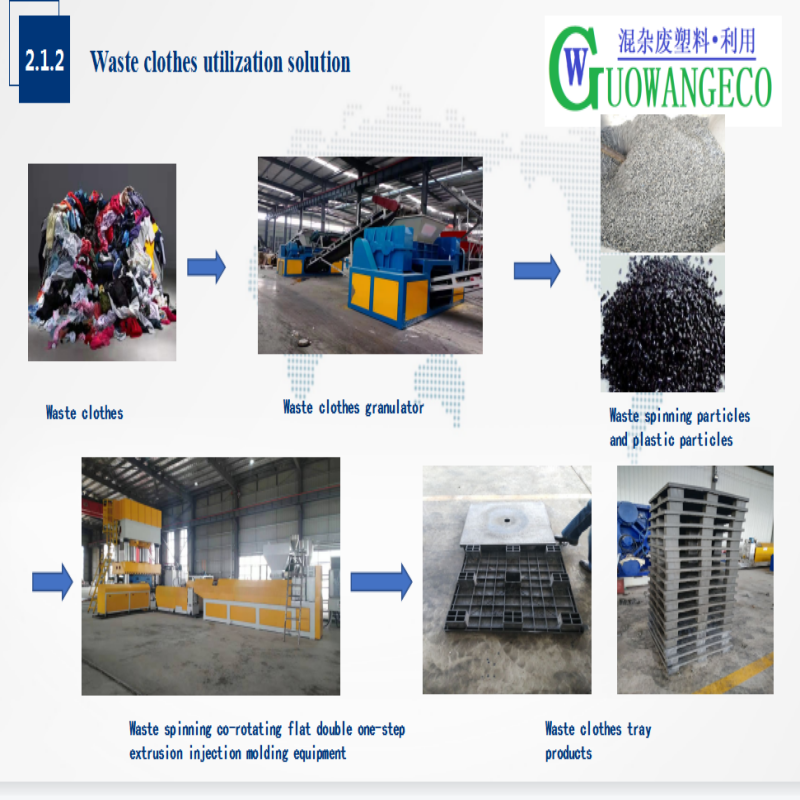According to years of research and development experience, a certain amount of plastic must be added to waste textiles in order to be used. In order to combine plastic and waste textiles uniformly, waste textiles must be pelletized and then added to special equipment to make pallets and other products.
According to incomplete statistics, more than 1 billion tons of old clothes in the world are dumped into landfills every year, generating 2 million tons of carbon dioxide emissions every year. What's more shocking is that by 2030, the impact of old clothes on climate warming will increase to 49%, and climate warming will make more and more polar bears homeless and even frequent forests extinct. Born on this blue planet, what can we do for polar bears?
The Bureau of international recycling (BIR) studied at the University of Copenhagen, Sweden in 2008 and concluded that every kilogram of used clothes recycled can reduce carbon dioxide emissions by 3.6kg. This means that without recycling every piece of old clothes, we can slow down the rate of global warming, and we have more hope of preserving a glacier for polar bears.
In view of this, our company has invested a lot of manpower and material resources in the research of recycling equipment. Developed a complete set of extrusion and injection molding equipment.


Technicalparameters of GWJZD Injection&Extrusion Molding Machine (2 injection parts) :
|
type |
Frequency(pcs/min) |
压机压力 |
Output (KG/H) |
Total Power (KW) |
加工工件(长*宽) |
Outside dimension (L*W*H) |
Weight (Ton) |
|
GWJZD-1 |
1.5-2 |
315 |
100-150 |
45.63 |
300*300 |
6000*1460*3500 |
25 |
|
GWJZD-2 |
2-3 |
1500 |
350-450 |
250 |
1500*1300 |
10000*5400*6000 |
85 |
|
GWJZD-3 |
2.5-4 |
2000 |
450-550 |
108 |
1600*1400 |
14000*5500*7000 |
120 |
 X
X